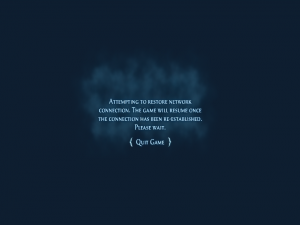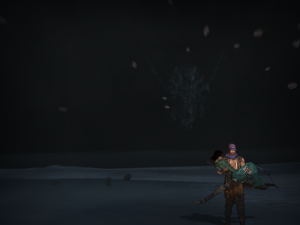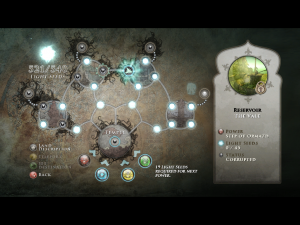Prince of Persia: The Forgotten Sands
 According to Steam, I have spent 11 hours playing Prince of Persia: The Forgotten Sands. In fact, I’ve spent something more like half an hour at it, little enough that I haven’t even made it out of the intro/tutorial level (which is strikingly similar to the tutorial level in Prince of Persia: The Sands of Time). Remember Arkham Asylum? That had a problem with Steam’s timekeeping too. It had a launcher that spawned the game in a separate process and then terminated. Since Steam only counts the time spent in the program it actually launches, its time count was way too low. But at least that didn’t lead to further troubles. PoP:TFS has the opposite problem, which is far worse: for some reason Steam can’t tell when I’ve exited the game, so it keeps on counting me as playing when I’m not. And also, because it thinks I’m still playing, it won’t let me launch any other games, or exit Steam. The only way I’ve found to exit this state is by killing the Steam process via the Windows task manager.
According to Steam, I have spent 11 hours playing Prince of Persia: The Forgotten Sands. In fact, I’ve spent something more like half an hour at it, little enough that I haven’t even made it out of the intro/tutorial level (which is strikingly similar to the tutorial level in Prince of Persia: The Sands of Time). Remember Arkham Asylum? That had a problem with Steam’s timekeeping too. It had a launcher that spawned the game in a separate process and then terminated. Since Steam only counts the time spent in the program it actually launches, its time count was way too low. But at least that didn’t lead to further troubles. PoP:TFS has the opposite problem, which is far worse: for some reason Steam can’t tell when I’ve exited the game, so it keeps on counting me as playing when I’m not. And also, because it thinks I’m still playing, it won’t let me launch any other games, or exit Steam. The only way I’ve found to exit this state is by killing the Steam process via the Windows task manager.
That’s not the only thing about the experience that reminds me of my experiences with Arkham Asylum, for just as AA introduced me to the joys of Games for Windows Live, so too is PoP:TFS my first experience with Ubisoft’s “Uplay” service and their infamous need-a-constant-network-connection-to-play DRM. It’s not clear to me how closely linked these two things are; all I can say is that I encountered them both for the first time together, and so my dissatisfaction spreads to both. The chief effect of Uplay is that I needed to exit the game to change the default resolution (800×600) to something that looks reasonably good, because most of the configuration is outside of the game, in the Uplay launcher app. The chief effect of the DRM is that, once I exited the game, I couldn’t get back in. The game gets stuck at a screen telling me that it’s “attempting to restore the network connection”, which is absurd, because I have a network connection — I can alt-tab out and surf the web, send email, etc. without problems. Goodness knows what the real problem is.
Uplay seems like a very unnecessary thing to me. It’s trying to be like Steam or GfWL, but those services at least have games from more than one publisher, and Uplay doesn’t. Still, when I first launched the game and was told I needed to register for an Uplay account first, I was actually inclined to say “Well, at least it isn’t GfWL”. I mean, when it downloaded a patch for itself, it did it fairly quickly, needed only one iteration, and didn’t ask me to restart the app. This is still worse performance than your typical single-programmer indie work on Steam, mind you, because it’s using Uplay’s built-in patcher, which doesn’t run until you try to launch the game.
But such objections pale in comparison to the DRM, which is a piece of software whose sole purpose is to prevent the game from working. In theory it’s only supposed to prevent it from working for pirates, but apparently someone at Ubisoft decided that keeping the wrong folks out was more important than letting the right folks in. It’s like one of those overzealous IP lawyers who hurt their employers’ business by harassing fan sites and alienating customers. The message it puts on the screen when it refuses to let me play even seems to acknowledge that I’ve successfully run the game before, which you’d think would be a good indication that there’s no good reason to stop me from doing so again.
I suppose I could download a crack. I mean, it’s not like DRM actually works for its intended purpose. But why bother? There are plenty of other games waiting.
 Comments(2)
Comments(2)
